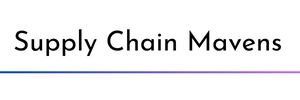Hint: It’s Demand
We’re hearing in the news about the links between supply chain and inflation. There are many factors influencing the availability of goods right now, but it’s not all about the usual suspects of labor shortages, bottlenecks at ports, lack of truckers and general shortages of supplies.
The fact is consumer demand for goods is up 30 percent and has been increasing since the beginning of the pandemic. Comfort spending is up. People are still not dining out or going to the movies like they did pre-pandemic. Rather than going to restaurants and theaters, they are investing in home goods and electronics.
For example, Apple has been a supply chain darling for years but lately even they have stumbled. Apple starts working on new phones two years in advance of the release date. This year, the demand forecast was out of date because they couldn’t have predicted the pandemic or how it would impact production or demand twenty-four months ago. As a result, a few months back a colleague of ours went to the Apple store to buy an iPad for her son. Apple was all out, and the clerk suggested she try Best Buy (they didn’t have any either). A month later, she put in an order for the very popular, new iPhone 13 and it took Apple a month to send it.
A recent article in PBS Newshour explores the demand issue in detail. According to the author, “E-commerce activity has simply mushroomed to levels that never existed before the pandemic. Demand for products has significantly outstripped the market’s capacity to produce or ship what is ordered.” And due to the increase not only in demand but also for shipping, retailers have experienced freight costs increasing by ten times. They also have had to hire and train new employees to ship goods and drive trucks to residences. These additional costs are passed along to the consumer.
This chart from Freight Waves illustrates the problem.
Impact on Consumer Purchasing Power
The traditional view is that inflation decreases demand because it decreases consumer purchasing power. In this case, wages are up so the purchasing power remains high. In addition, many consumers have reduced other costs – such as commuting and dry cleaning – and it’s unclear when they will have those costs in their budget again. Plus, government stimulus checks have been channeled into consumer spending.
How do we get out of this mess? We need to reduce waste, consider near-shoring where possible. We need to accept it will be difficult to plan and forecast better right now. We can solve for this by developing more agile supply chains. They are the ticket to more stable and predictable delivery. By becoming agile, supply chains will be more able to respond to whatever comes down the road.
Manufacturers and distributors are going to have to look at the workforce and consider breaking their models and possibly paying more or offering better benefits. The will also need to train their staff on new technology.
Educate Your Team
Speaking of training, if you need help improving your supply chain, educate your team. Our instructors have extensive supply chain and operations management and demand/supply chain experience. We have classes starting in January.

